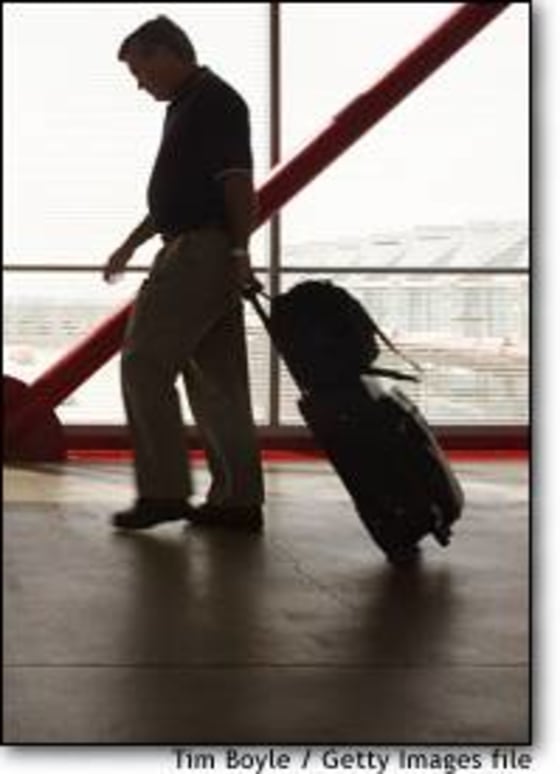Business travelers will take to the skies in greater numbers during the next six months, according to a new survey. But that doesn’t necessarily spell good news for the airlines. Nearly half those road warriors are basing travel plans around the economy. And many plan to keep using low-fare carriers.
More than 40 percent said they planned to increase their travel plans in the next six months, according to the survey of over 1,600 U.S. business travelers by Accenture’s airline consulting division. Another 40 percent said their travel plans would remain stable, and about 20 percent expected to cut back. Some high-profile travel concerns — global violence and health issues like the SARS virus — weren’t occupying business travelers’ minds nearly so much as the economy or worries about their own corporate budgets.
“There’s a clear corellation between GDP growth and air travel,” said Blair Pomeroy, a partner in Accenture’s airline group. “People think, just like we see with the stock market, that things are improving and budgets are loosening.”
Nearly all planned some domestic travel before 2004, and one-quarter said they would go overseas. Within the United States, Chicago, New York and Los Angeles were the most frequent destinations among large cities.
Shreds of improvement
That comes amid slight signs of improvement in airline traffic, which has been down for much of this year. There were 421,000 commercial airplane departures in April, according to the Air Transport Association, down over 9 percent from a year before. But then airlines such as Continental and American reported higher load factors in May — the percentage of their airplanes that are filled. Goldman Sachs this week raised estimates on several domestic airlines, but warned that a major economic bounceback is needed to pull carriers out of their slump.
“For airlines to achieve substantial profits,” Goldman airline analyst Glenn Engel said in a report, “the business sector must show a better than anemic recovery.”
One major concern for airlines is that more firms are using technology to save executives from hitting the road, and forcing them to be more thrifty when they go.
When it came to why they were changing travel plans, 35 percent said their companies were using more teleconferencing or videoconferencing instead of travel. And more than one in five said they had changed plans because their company limited their choice of airlines and hotels.
In part that translated into less capacity — fewer flights by the airlines — though they’re slowly nudging levels up again. Still, the levels remain below forecasts made before the Iraq war, according to the Goldman report, and the scramble for business is still there. United Airlines announced Wednesday it would try and lure business travelers with a deal that essentially offers a fourth flight for the price of three eligible tickets.
Low-fare travel
The survey contained some good news for low-fare carriers, which 60 percent of travelers had used — including nearly three-quarters of travelers for smaller firms. Sixteen percent had upped their bookings of low-fare tickets, and one in five planned to use even more low-fare options. About one-quarter said they wouldn’t be traveling with a low-fare carrier.
And contrary to the notion that business travel is last minute, just 3 percent said they planned trips less than 2 days in advance. Most planned them within two weeks of leaving, though more than 40 percent made plans more than two weeks out. This runs against traditional industry pricing, which reserves high last-minute fares for business travelers — fares that have been used with ever diminishing frequency.
“There are fewer and fewer ways to segment out those business folks,” said Pomeroy, who previously worked for American and United. “They’re beginning to echo and mirror the leisure folks.”
That also held with the way businesspeople were making their plans, with many turning to online bookings. Nearly six in 10 used the Internet in some form to plan their travel — with 70 percent of travelers at companies valued at $1 billion or more logging on before packing their bags.
But that didn’t necessarily mean they were using leisure travel portals. Some 35 percent used internal company travel systems — including most employees at large corporations. Another 28 percent made arrangements directly with airlines and hotels. Less than 20 percent used an online travel service like Expedia or Travelocity, and even fewer worked with an outside travel agency, according to the survey of 1,648 travelers, which had a margin of error of /3 percent.
Lodging options
When it came to a roof over their heads, most said they used mid-range hotels like Marriott or Hilton, with most of the rest using budget chains. Almost none stayed in luxury hotels. Most said price was their biggest deciding factor in finding a place to stay, along with location — with a preference for lodging near their meeting or office. Half said a hotel’s brand and reputation impacted their choice of where to stay.
Reward programs also remained a bit hit, with six in 10 travelers saying they affected their choice of both airlines and hotels. Another 17 percent said it affected their choice of airlines, but not hotels. For veteran travelers, extra perks and rewards from hotels remained key to their overall strategy.
“At some point road warriors have so many airline miles they also want the other travel perks,” Pomeroy said.
